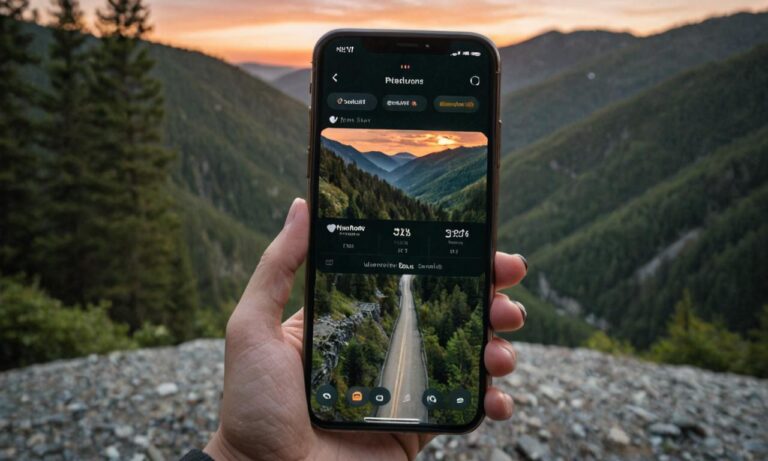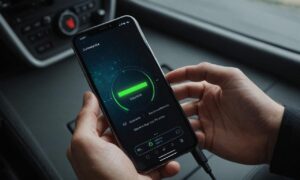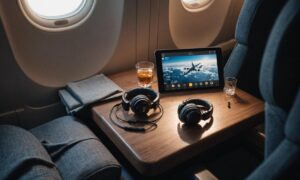When it comes to the functionality of our smartphones, the interplay between various features can sometimes lead to confusion. One common question that arises is whether enabling Airplane Mode on your device affects the operation of location-sharing services like Find My Friends. In this article, we’ll delve into the details to provide a comprehensive understanding of this matter.
Understanding Airplane Mode
Before we explore its impact on location services, let’s clarify what Airplane Mode entails. When you activate Airplane Mode on your device, it essentially disables all wireless communication features, including cellular signals, Wi-Fi, and Bluetooth. This mode is commonly used during flights to ensure compliance with aviation regulations and to prevent interference with the aircraft’s communication systems.
The Relationship with Find My Friends
Find My Friends is a location-sharing feature available on various mobile platforms, allowing users to share their real-time location with friends and family. The question arises: does enabling Airplane Mode halt the operation of Find My Friends? The answer is dependent on the specific functionalities of the service and the device in question.
Airplane Mode and Location Services
Typically, enabling Airplane Mode does affect location services, including Find My Friends. When in Airplane Mode, your device essentially cuts off its ability to communicate with GPS satellites, limiting its capacity to provide accurate location information. As a result, Find My Friends may not be able to update your real-time location while Airplane Mode is active.
Exceptions and Workarounds
It’s essential to note that some devices and applications may have mechanisms to work around the restrictions imposed by Airplane Mode. In certain cases, devices may use alternative methods, such as Wi-Fi triangulation, to estimate your location. However, the accuracy of such methods is often inferior to traditional GPS-based location tracking.
Best Practices for Find My Friends Usage
If maintaining real-time location sharing is crucial while using Find My Friends, it is advisable to keep Airplane Mode disabled. Alternatively, you can selectively enable Wi-Fi and Bluetooth while keeping cellular signals disabled to reduce interference during flights while still allowing location services to function.
In conclusion, while Airplane Mode is a useful feature for ensuring compliance during flights, it does have implications for location-sharing services like Find My Friends. Understanding the interplay between these features empowers users to make informed decisions about when and how to use them. As technology evolves, it’s essential to stay informed about the functionalities of your devices and the potential impacts of various settings.
Frequently Asked Questions
Users often have specific queries regarding the relationship between Airplane Mode and Find My Friends. Here are some frequently asked questions to address common concerns:
| Question | Answer |
|---|---|
| 1. Can I use Find My Friends in Airplane Mode? | Generally, using Find My Friends in Airplane Mode restricts the device’s ability to update real-time location due to disabled communication with GPS satellites. Exceptions may exist based on device-specific features. |
| 2. Are there alternative methods for location tracking in Airplane Mode? | Some devices may employ alternative methods like Wi-Fi triangulation to estimate location in Airplane Mode. However, the accuracy of such methods is often compromised compared to traditional GPS-based tracking. |
| 3. How can I balance using Airplane Mode and Find My Friends? | For optimal results, it’s advisable to keep Airplane Mode disabled if real-time location sharing is essential. Alternatively, selectively enabling Wi-Fi and Bluetooth while keeping cellular signals off can minimize interference during flights while allowing location services to function. |
Exploring Advanced Location Features
Beyond basic location sharing, modern smartphones offer advanced features that enhance the user experience. Exploring these functionalities can provide users with a more comprehensive understanding of their device’s capabilities.
Geofencing and Smart Notifications
Geofencing is a location-based service that allows users to define virtual boundaries. When the device enters or exits these predefined areas, users can receive smart notifications. This feature is particularly useful for location-based reminders and automation.
Location History and Privacy Settings
Many location services provide users with the option to view location history. Understanding how to manage and control access to this information through privacy settings ensures a secure and personalized experience.
Optimizing Battery Life During Location Sharing
Continuous use of location services, especially in real-time sharing applications, can impact battery life. Exploring strategies to optimize battery consumption while using these features ensures a more efficient and extended device usage.
See also:






